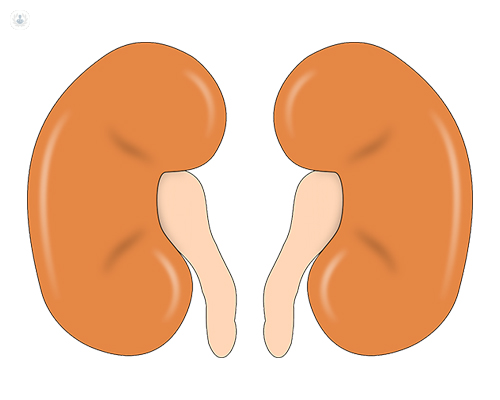Renal vein thrombosis
Dr Ravi Rajakariar - Nephrology
Created on: 01-09-2013
Updated on: 07-03-2023
Edited by: Conor Dunworth
What is renal vein thrombosis?
Renal vein thrombosis occurs when a blood clot forms within one or both of the renal veins, obstructing the normal flow of blood from the kidneys. It primarily affects individuals with certain risk factors, such as kidney disease, trauma, infection, pregnancy, or conditions that cause hypercoagulability (increased blood clotting).

What are the causes of renal vein thrombosis?
Several factors can contribute to the development of renal vein thrombosis. In some cases, an underlying medical condition, such as nephrotic syndrome, lupus, or certain cancers, can lead to clot formation. Additionally, physical trauma to the kidneys, infection (such as sepsis or pyelonephritis), and the presence of a blood clotting disorder can increase the risk of RVT. Pregnancy, especially during the postpartum period, is another recognized cause.
How serious is renal vein thrombosis?
The severity of renal vein thrombosis can vary depending on various factors, including the extent of the clot, the affected kidney's function, and the promptness of diagnosis and treatment. While some cases may be asymptomatic, others can lead to serious complications. Potential consequences include kidney damage, renal infarction (tissue death), and in rare instances, even life-threatening conditions like pulmonary embolism (a blood clot in the lungs).
How is renal vein thrombosis diagnosed?
Diagnosing renal vein thrombosis typically involves a combination of medical history evaluation, physical examination, and imaging studies. Your healthcare provider may order tests such as Doppler ultrasound, CT scan, MRI, or renal venography to visualize the blood flow and identify any blood clots within the renal veins. Blood tests may also be conducted to assess kidney function and screen for underlying medical conditions.
How is renal vein thrombosis diagnosed?
The treatment of renal vein thrombosis aims to prevent further clot formation, restore normal blood flow to the kidneys, and manage any underlying conditions contributing to the clot formation. Depending on the severity of the condition, treatment may involve anticoagulant medications to thin the blood and dissolve existing clots, pain management, and measures to address the underlying cause. In some cases, surgical intervention may be necessary to remove the clot or repair damaged blood vessels.
As for the outlook, the prognosis for renal vein thrombosis varies depending on several factors. With prompt diagnosis and appropriate treatment, many cases of RVT can be effectively managed, and kidney function can be preserved. However, the outcome can be less favourable if there is significant kidney damage or if the condition is associated with severe underlying diseases. Regular follow-up with a healthcare professional is essential to monitor kidney function and prevent potential complications.
Can renal vein thrombosis resolve on its own?
In some instances, particularly when the clot is small and does not obstruct blood flow significantly, renal vein thrombosis can resolve spontaneously without medical intervention. However, it is crucial to consult a healthcare professional for an accurate diagnosis and appropriate management. Even if the symptoms improve or disappear, it is essential to determine the underlying cause and take necessary steps to prevent future occurrences or complications.
